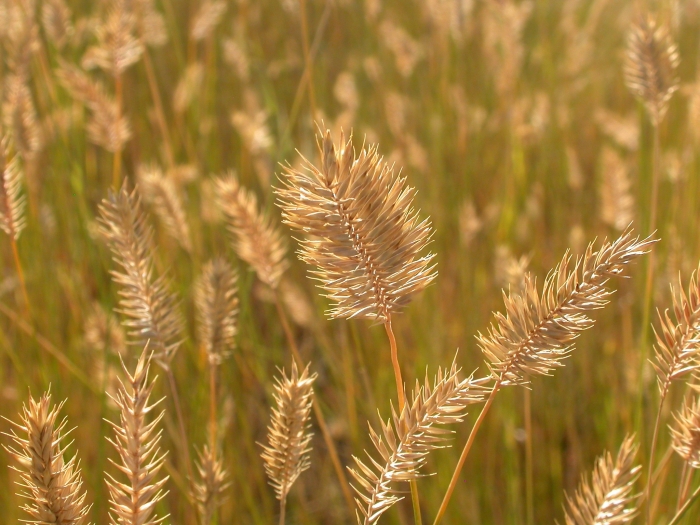Crested Wheatgrass
(Agropyron cristatum)
Crested Wheatgrass (Agropyron cristatum)
/
/

Matt Lavin
CC BY 4.0
Image By:
Matt Lavin
Recorded By:
Copyright:
CC BY 4.0
Copyright Notice:
Photo by: Matt Lavin | License Type: CC BY 4.0 | License URL: http://creativecommons.org/licenses/by/4.0/ | Rights Holder: Matt Lavin | Publisher: iNaturalist | Date Created: 2009-08-17T18:12:56-07:00 |























Estimated Native Range
Summary
Agropyron cristatum, commonly known as crested wheatgrass, is a perennial grass originally native to central Europe, the Caucasus, and Asia. It has been widely introduced to North America and other regions for forage and erosion control. In its native habitat, it is adapted to open grasslands and dry plains where it can withstand extreme temperatures and drought conditions. Crested wheatgrass typically grows 12-20 inches high and is characterized by its dense tufts, scabrous sheaths, and distinctive flat spikes that bear a resemblance to wheat, hence its common name.
Crested wheatgrass is valued for its durability and longevity, with some stands known to last over 30 years. It is often used in reclamation projects, as it establishes quickly on disturbed soils and helps prevent erosion. This grass prefers well-drained loamy soils, tolerates salinity, and requires minimal water once established, making it suitable for xeriscaping. However, due to its invasive potential, it should be planted with caution outside of its native range. In cultivation, it can outcompete native vegetation and alter ecological balances. It is also used as a forage crop for livestock due to its early spring growth and nutritional value.CC BY-SA 4.0
Crested wheatgrass is valued for its durability and longevity, with some stands known to last over 30 years. It is often used in reclamation projects, as it establishes quickly on disturbed soils and helps prevent erosion. This grass prefers well-drained loamy soils, tolerates salinity, and requires minimal water once established, making it suitable for xeriscaping. However, due to its invasive potential, it should be planted with caution outside of its native range. In cultivation, it can outcompete native vegetation and alter ecological balances. It is also used as a forage crop for livestock due to its early spring growth and nutritional value.CC BY-SA 4.0
Plant Description
- Plant Type: Grass
- Height: 1-3 feet
- Width: 1-2 feet
- Growth Rate: Moderate
- Flower Color: N/A
- Flowering Season: Spring
- Leaf Retention: Deciduous
Growth Requirements
- Sun: Full Sun, Part Shade
- Water: Medium
- Drainage: Medium, Slow
Common Uses
Deer Resistant, Erosion Control, Low Maintenance
Other Names
Common Names: Standard Crested Wheatgrass, Fairway Crested Wheatgrass
Scientific Names: , Agropyron cristatum, Agropyron aristatum, Agropyron barginensis, Agropyron brandzae, Agropyron brandzae subsp. ciliatum, Agropyron brandzae var. nyaradyanum, Agropyron bulbosum var. ciliatum, Agropyron bulbosum var. dunense, Agropyron bulbosum var. dunensis
GBIF Accepted Name: